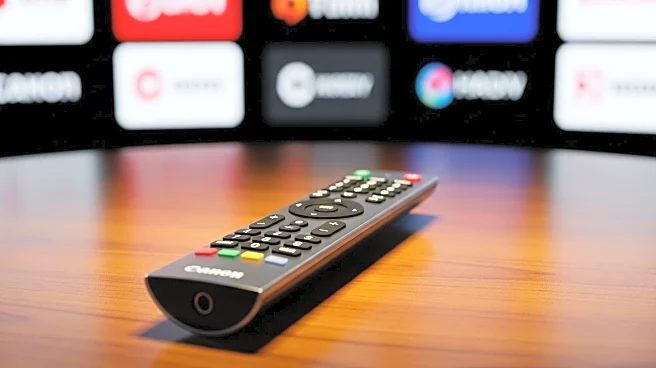What is the story about?
What's Happening?
Live TV streaming services such as YouTube TV, Fubo, Hulu Live, Sling, and others are competing to offer the most comprehensive channel lineups. With the rising costs of cable and satellite TV, these services provide alternatives for cord-cutters seeking diverse programming without long-term contracts. Each platform offers different channel selections, pricing, and features like DVR capabilities. The competition is fierce, with services adjusting their offerings and prices to attract subscribers. Notably, Fubo has lost Warner Bros. Discovery channels, impacting its appeal, while others like YouTube TV and Hulu Live continue to expand their channel availability.
Why It's Important?
The competition among live TV streaming services is crucial as it shapes consumer choices in the evolving media landscape. As more viewers move away from traditional cable, these platforms must offer attractive packages to capture market share. The availability of popular channels and sports networks can significantly influence subscriber decisions, affecting the financial performance of these companies. The ongoing adjustments in pricing and channel offerings reflect the dynamic nature of the streaming industry, where services must continuously innovate to meet consumer demands and remain competitive.
What's Next?
As live TV streaming services vie for subscribers, further changes in pricing and channel availability are likely. Platforms may seek exclusive content deals or partnerships to enhance their offerings and differentiate themselves from competitors. The industry could see increased consolidation or collaboration among services to provide more comprehensive packages. Consumers can expect ongoing improvements in streaming technology and user experience, potentially leading to new features or bundled services. The competition may also drive innovation in content delivery and personalization.
Beyond the Headlines
The competition among streaming services underscores broader shifts in media consumption, with implications for advertising, content creation, and distribution. As platforms expand their offerings, they must navigate challenges related to licensing agreements and regional content restrictions. The focus on channel lineups highlights the importance of content diversity and accessibility in attracting and retaining subscribers. Long-term, these developments could influence the structure of the media industry, with potential impacts on traditional broadcasters and content producers.
AI Generated Content
Do you find this article useful?













